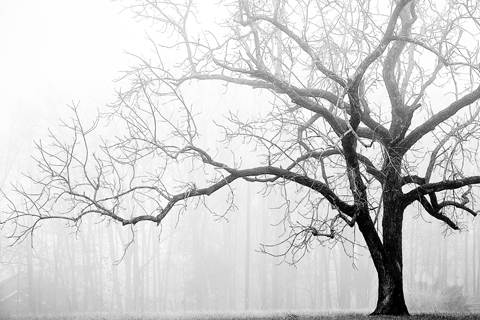
There are a number of things you can do to help your trees survive the winter when they go dormant. Almost everything about winter; the ground freezing, the heat of daytime followed by freezing nights, snow and ice storms can all damage your tree.
Trees are known for their ability to survive through the winter and then spring back to life during the spring. Today we’ll be taking a look at just how trees are able to do this, and we’ll learn something about nature as we go.
Let’s start by looking at dormancy and some of the measures 72 Tree and you can take to help your trees survive the coldest months.
Dormancy is one of the coolest tricks Mother Nature knows. This is when a tree stops producing food during the winter and no longer needs the photosynthesis process or the leaves involved in it. So leaves have to be removed to conserve energy. Deciduous trees produce a chemical called abscisic acid (ABA) in the terminal buds that connect leaves, telling leaves it’s time for them to go.
ABA prevents both deciduous and coniferous trees from growing. This impeded growth is another part of the dormancy process, further reducing how much energy the tree consumes. As the tree enters a conservation state, the metabolism of the tree slows down; using the energy from stored food slowly to maintain vital functions.
Pruning – You should wait until dormancy to prune your tree, when you aren’t likely to damage new growth. Late season growth is particularly at risk from pruning, as it hasn’t had the time to prepare for winter months. Ice crystals may form within new growth and rupture cell walls. If they aren’t pruned properly, they are likely to die off during the spring.
Visit here for more pruning tips and instructions.
Mulching – Winter drought is a problem caused by a tree shrub or plant losing more moisture than can be absorbed. While you aren’t able to control the weather, you have some influence of the effects of it. Putting a thick layer of organic mulch down before winter temperatures set in helps to insulate the roots. The mulch also prevents runoff and moisture loss, benefiting the overall health and hydration of the tree.
Please note that trees don’t freeze entirely, even in a dormant state. Looking at the tree shows you they prepare on the cellular levels. It sounds incredible, but much of the work a tree does to survive winter is happening under the bark inside the tree.
Remove Build-up of Ice and Snow – It’s likely that you might see snow build up on your tree or cling to the branches of it following some bad winter weather. It’s important that you leave the snow be and don’t shake it off. There’s a good chance that the branches have frozen solid and become brittle. Shaking them could damage the tree or even cause these limbs to break off and fall, which is a serious hazard. If you find yourself in this situation then call in a tree professional to evaluate the situation. They will be able to advise the best course of action to take.
Trees will start springing back to life as the days get longer and the temperatures get warmer. If you took care of them properly, then you’re in for another year of beauty and shade provided by a healthy tree. Taking care of them, by the way, means doing absolutely nothing and letting nature take its course. After taking care of the seasonal pruning, you’ll have done enough to protect your tree. Trust the natural survival mechanisms of your tree to handle everything else.
Your trees are often stressed during winter. Knowing ways to lessen the impact is helpful. Learn these preventative tree stress methods to give your trees a greater chance at prolonged health and life. 72tree.com/winter-tree-stress-prevention-and-protection-tips/